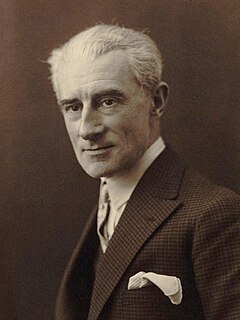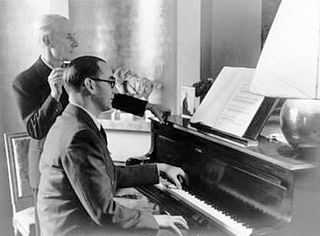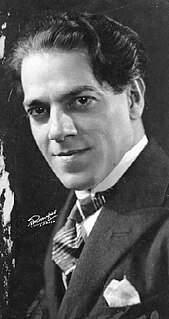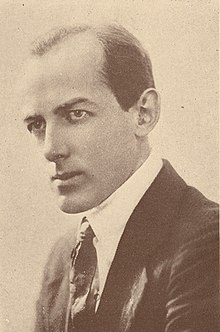
Henry Dixon Cowell was an American composer, writer, pianist, publisher and teacher. Earning a reputation as an extremely controversial performer and eccentric composer, Cowell became a leading figure of American avant-garde music for the first half of the 20th century — his writings and music serving as a great influence to similar artists at the time, including Lou Harrison, George Antheil, and John Cage, among others. He is considered one of America's most important and influential composers.

Frank Martin was a Swiss composer, who spent much of his life in the Netherlands.

Maurice Ravel's Piano Concerto in G major, was composed between 1929 and 1931. The concerto is in three movements, with a total playing time of a little over 20 minutes. Ravel said that in this piece he was not aiming to be profound but to entertain, in the manner of Mozart and Saint-Saëns. Among its other influences are jazz and Basque folk music.

The Piano Concerto for the Left Hand in D major was composed by Maurice Ravel between 1929 and 1930, concurrently with his Piano Concerto in G major. It was commissioned by the Austrian pianist Paul Wittgenstein, who lost his right arm during World War I. The Concerto had its premiere on 5 January 1932, with Wittgenstein as soloist performing with the Vienna Symphony Orchestra.
The Piano Concerto, Op. 38, by Samuel Barber was commissioned by the music publishing company G. Schirmer in honor of the centenary of their founding. The premiere was on September 24, 1962, in the opening festivities of Philharmonic Hall, now David Geffen Hall, the first hall built at Lincoln Center in Manhattan, with John Browning as soloist with the Boston Symphony Orchestra conducted by Erich Leinsdorf.
Václav Nelhýbel was a Czech American composer, mainly of works for student performers.
The Viola Concerto by William Walton was written in 1929 and first performed at the Queen's Hall, London on 3 October of that year by Paul Hindemith as soloist and the composer conducting. It had been written with the violist Lionel Tertis in mind, and he took the work up after initially rejecting it. The concerto established Walton as a substantial figure in British music and has been recorded by leading violists internationally. Walton revised the instrumentation of the concerto in 1961, lightening the orchestral textures.

The Sonata for Two Pianos and Percussion, Sz. 110, BB 115, is a musical piece written by Hungarian composer Béla Bartók in 1937. The sonata was premiered by Bartók and his second wife, Ditta Pásztory-Bartók, with the percussionists Fritz Schiesser and Philipp Rühlig at the International Society for Contemporary Music (ISCM) anniversary concert of 16 January 1938 in Basel, Switzerland, where it received enthusiastic reviews. Bartók and his wife also played the piano parts for the American premiere which took place in New York City's Town Hall in 1940, with the percussionists Saul Goodman and Henry Deneke. It has since become one of Bartók's most performed works.

Eric Ewazen is an American composer and teacher.
Concerto for Trombone is a 1942 instrumental crossover work in three movements, which trombonist Tommy Dorsey, one of the best known musical entertainment stars of his time, commissioned from Nathaniel Shilkret, a noted conductor and composer of music for recording, radio and film.
Benjamin Britten's Violin Concerto, Op. 15, was written from 1938 to 1939 and dedicated to Henry Boys, his former teacher at the Royal College of Music. It was premiered in New York on 29 March 1940 by the Spanish violinist Antonio Brosa with the New York Philharmonic conducted by John Barbirolli. A revised version of the concerto appeared in 1951, including alterations of the solo violin part prepared with the assistance of Manoug Parikian. It was performed by Bronislav Gimpel and the Royal Philharmonic Orchestra under Thomas Beecham.
The Concerto Fantasy for Two Timpanists and Orchestra is a double timpani concerto written by Philip Glass in 2000. It is paired with the Cello Concerto on Vol. I of Glass' Concerto Project, a set of eight concerti by the composer. A typical performance of the work lasts 25–28 minutes. It was written for Jonathan Haas and later recorded by Evelyn Glennie, and was premiered by Haas and Svet Stoyanov with the American Symphony Orchestra in Avery Fisher Hall, Lincoln Center, conducted by Leon Botstein. The work was commissioned jointly by the American Symphony Orchestra, the Peabody Symphony, the Milwaukee Symphony, the St. Louis Symphony and the Phoenix Symphony. In 2004, a transcription for wind ensemble was written by Mark Lortz, which debuted at Peabody Institute in 2005.
The Percussion Concerto No. 2 is a concerto for solo percussion and orchestra by the Scottish composer James MacMillan. The work was jointly commissioned by the Netherlands Radio Philharmonic, the Philharmonia Orchestra, the Orchestre national du Capitole de Toulouse, the Cabrillo Festival of Contemporary Music, the Baltimore Symphony Orchestra, and the São Paulo State Symphony. It was first performed on November 7, 2014 at TivoliVredenburg in Utrecht, the Netherlands, by percussionist Colin Currie and the Netherlands Radio Philharmonic under conductor James Gaffigan. The composition is MacMillan's second percussion concerto after 1992's Veni, Veni, Emmanuel.
Two Controversies and a Conversation is a composition for piano, percussion, and chamber orchestra by the American composer Elliott Carter. Its world premiere was given on June 8, 2012 at the Metropolitan Museum of Art in New York City by the pianist Eric Huebner and the percussionist Colin Currie with the New York Philharmonic under the direction of David Robertson. The piece is dedicated to Colin Currie and the pianist Pierre-Laurent Aimard. It was one of the last works composed by Carter, who completed the piece at the age of 103.

Piano Concerto No. 1, W453, is a composition for piano and orchestra by the Brazilian composer Heitor Villa-Lobos, written in 1945. A performance lasts about 38 minutes.

The Piano Concerto No. 2, W487, is a piano concerto by the Brazilian composer Heitor Villa-Lobos, written in 1948. A performance lasts about 28 minutes.
The Concerto for Violin and Orchestra "Eleven Eleven" is the first violin concerto written by American composer Danny Elfman. Co-commissioned by the Czech National Symphony Orchestra, Stanford Live at Stanford University, and the Royal Scottish National Orchestra, the piece premiered at Smetana Hall in Prague, on June 21, 2017, with Sandy Cameron on violin and John Mauceri conducting the Czech National Symphony Orchestra. In 2019, the premiere recording of the concerto featured Cameron with Mauceri conducting the Royal Scottish National Orchestra.

Einojuhani Rautavaara wrote his Piano Concerto No. 1, Op. 45, in 1969.
William Walton's Sinfonia Concertante is a three-movement piece for piano and orchestra, first performed in 1928. The composer revised it extensively in 1943. It is an early work, in the anti-romantic style favoured by Walton before the 1930s. There have been several recordings of the piece, featuring both the original and the revised versions.









